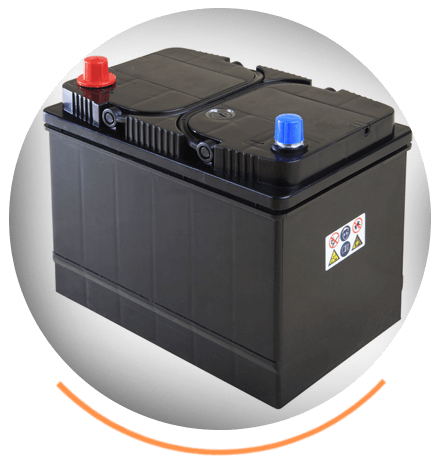
Keeping You On The Road
Cover every part of your car
Your car may be meticulously maintained - however, this doesn't mean a thing if it won't start. And that all rides on your battery. From ignition to door locks, your car battery is the catalyzing force that allows you to get from point A to point B. See the electrical system overview below on how this makes transportation possible:
Composed of a series of lead plates submerged in a 35% sulfuric acid/65% water solution, your 12-volt battery houses a chemical reaction that releases electrons through conductors, producing electricity which is then channeled into your vehicle's electrical system. When your car's engine is off, the battery supplies electricity to all of the electrical system components, including the essential power required to start your vehicle. In periods of high demand, the battery also supplements power from the charging system.
The charging system is life force of your vehicle's electrical system, consisting of three main mechanisms: the alternator, various circuits, and the voltage regulator. The alternator has two roles. It: a) provides power to the electrical system, and b) recharges the battery after the car has started. The various circuits act as conduits for electrical power, and the voltage regulator controls the voltage passed through these circuits. Remember, all of these components require consistent attention and maintenance. It's not just your battery that needs to be replaced every so often; if one of these components should fail, that pulsating power source is now reduced to a lifeless, twenty pound paper weight.
It may seem obvious that the starting system turns your vehicle's engine on, but did you know that this process consumes much more electrical power than anything else your car does? That's because the starting system consists of three components working one after another. Here's how it works: there's the ignition switch, the starter relay (or solenoid), and the starter motor. Turning the key causes a small amount of current to pass through the starter relay, allowing a stronger current to flow through the battery cables and into the starter motor. The starter motor cranks the engine, forcing the piston to create enough suction that draws a fuel and air mixture into the cylinder. The ignition system creates a spark that ignites the mixture, and combustion is born.
